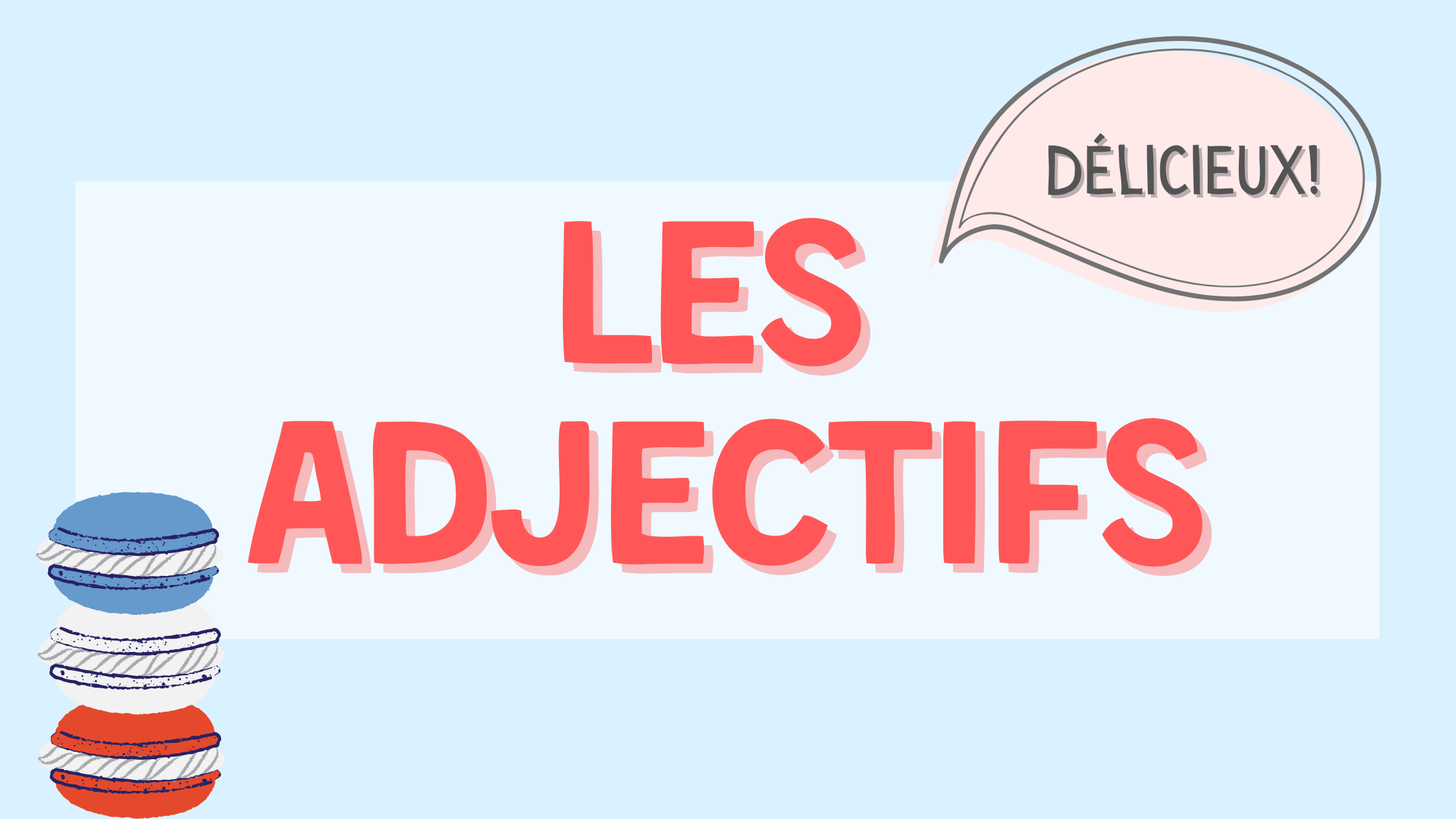What are French adjectives?
But before we do that, you can also listen to the podcast about French adjectives right here:
All set up? Allons-y!
Definition of French adjectives
As mentioned above, an adjective is a word that describes a noun. Unlike in English, French adjectives agree with the noun’s gender and number.
What is “agreeing” in French grammar?
When we say that an adjective agrees with the noun’s gender and number, it means that it will take on the same gender and the same number (singular or plural) as the noun that it is describing. For example:
1. Une voiture bleue
2. Des voitures bleues
1. “Une voiture” is a feminine singular noun (a car is feminine in French, and there is only one car here). If you still feel confused about noun gender in French, feel free to check out this lesson right here.
2. “Des voitures” is a feminine plural noun (more than one car), therefore, the adjective “bleu” will also be feminine plural.
You might also like
How to make adjectives agree with nouns
This next part is quite simple. As a general rule, to make a French adjective agree with a noun, this is what you need to learn. The default gender in French is masculine. But what does that mean?
As the French language uses genders for nouns, you could think that sentences would include BOTH genders, feminine and masculine, in sentences. But that would actually be a general mess, knowing that French can already be a complicated language for some to learn.
To make things easier, it has been decided that the masculine gender would be the default gender. For example. Let’s take different groups of people to illustrate and see how we should refer to them.
- Group 1: 10 men. Will be referred to using masculine plural.
- They are kind — Ils sont gentils.
- Group 2: 10 women. Will be referred to using feminine plural.
- They are kind — Elles sont gentilles.
- Group 3: 5 men and 5 women. Will be referred to using masculine plural.
- They are kind — Ils sont gentils.
- Group 4: 9 women and 1 man. Will be referred to using masculine plural (yes!).
- They are kind — Ils sont gentils.
Masculine singular
| Default adjective : Grand |
Feminine singular | Add an “e” to masculine form : Grande |
Masculine plural | Add an “s” to masculine form : Grands |
Feminine plural | Add “s” to feminine form : Grandes |
Keep in mind that the table above works only for regular French adjectives. There are some exceptions to this rule, and we call them “irregular adjectives”.
Some of them are:
Masculine sing. | Feminine | Masculine | Feminine |
Beau (handsome) | Belle (beautiful) | Beaux | Belles |
Blanc (white) | Blanche | Blancs | Blanches |
Vieux (old) | Vieille | Vieux | Vieilles |
Nouveau (new) | Nouvelle | Nouveaux | Nouvelles |
Fou (crazy) | Folle
| Fous | Folles |
Also, adjectives ending in –al will have their (masculine) plural forms ending in –aux:
amical -> amicaux
Exceptions: banal, fatal, naval, natal…
How do French adjectives end?
Ending | Masculine | Feminine |
-l | Gentil (kind) Naturel (natural) | Add –lle : Gentille Naturelle |
-n | Bon (good) Moyen (medium) | Add –nne : Bonne Moyenne |
-eur -teur | Blagueur Manipulateur | Change to –euse : Blagueuse Change to –trice: Manipulatrice |
-f | Actif Passif | Change to –ve : Active Passive |
-g | Long | Add –ue : Longue |
Also, French adjectives ending in -e in their masculine form will be unchanged in their feminine form:
rouge -> rouge
jaune -> jaune
You might also like
Other cases
In other cases, some adjectives will change their ending depending on the first letter of the noun following them.
Adjective | Masculine form before a vowel or a silent H | Feminine form |
Beau | Bel Un bel homme | Belle |
Nouveau | Nouvel Un nouvel ordinateur | Nouvelle |
Vieux | Vieil Un vieil ami | Vieille |
Placement of French adjectives
Une maison jaune.
Une voiture bleue.
Un homme perplexe.
In some cases, the adjectives will be placed before the noun.
Une belle maison.
Une petite voiture.
Beauty | Beau/belle/beaux/belles |
Age | Vieux/vieille/vieux/vieilles Ancien/ancienne/anciens/anciennes Nouveau/nouvelle/nouveaux/nouvelles |
Goodness | Bon/bonne/bons/bonnes Mauvais/mauvaises/mauvais/mauvaises |
Size | Petit/petite/petits/petites Grand/grande/grands/grandes Gros/grosse/gros/grosses |
Some of those adjectives can also be placed after the noun, but in that particular case, the meaning of the sentence will be changed.
For example:
Une ancienne maison -> A house that used to belong to me, but is not mine anymore.
Une maison ancienne -> An old house, a house that is ancient.
Conclusion








